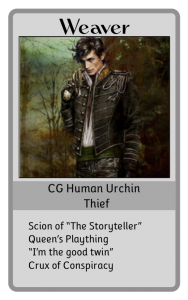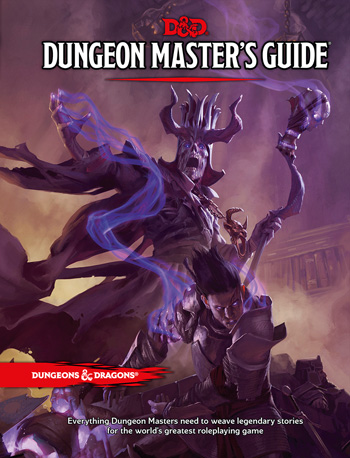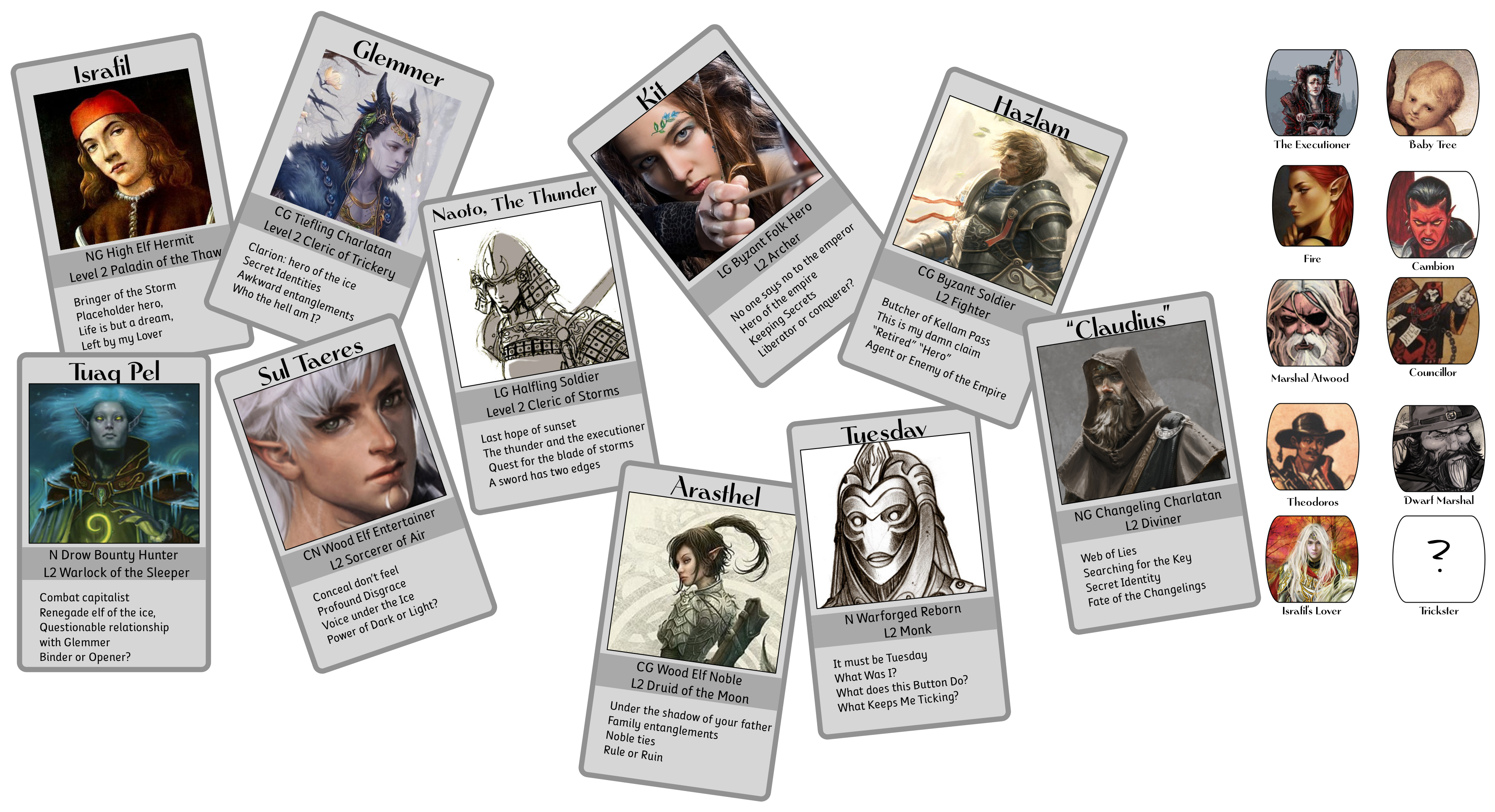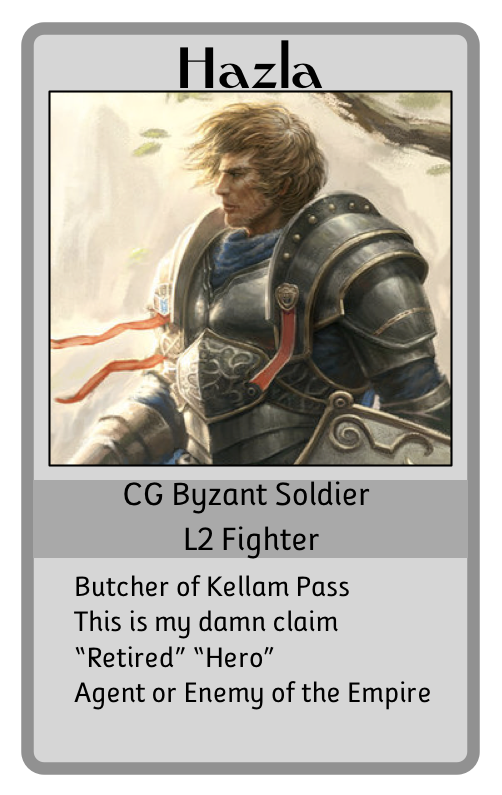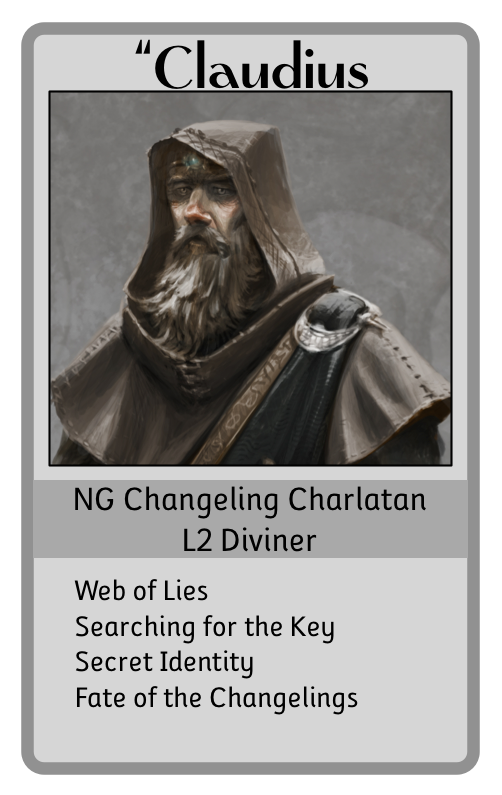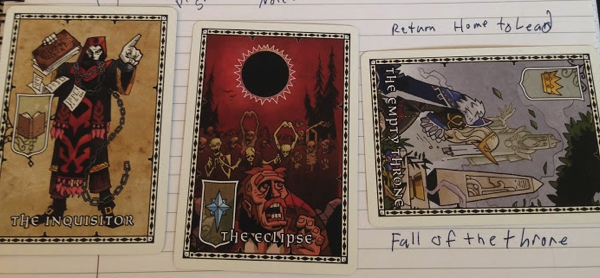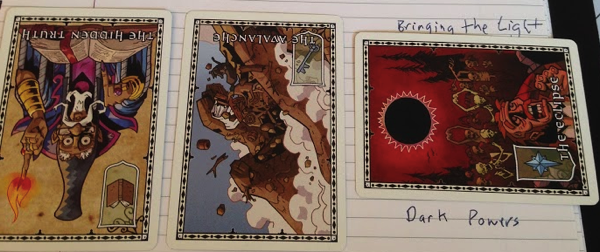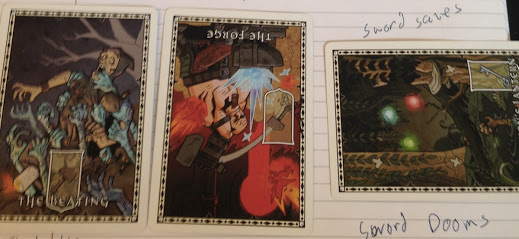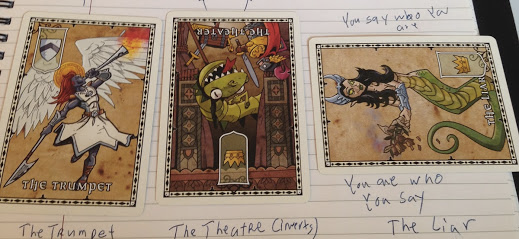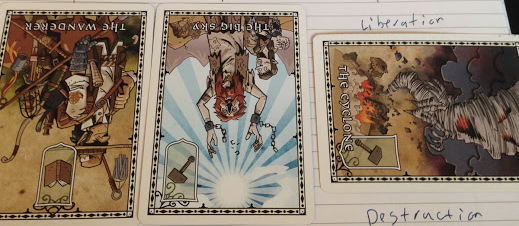 Thinking a little bit more about the elves. I haven’t got a good hook for the gnomes yet, so their status is in limbo. They may just be mixed in among the halflings, but that’s a little bit too easy.
Thinking a little bit more about the elves. I haven’t got a good hook for the gnomes yet, so their status is in limbo. They may just be mixed in among the halflings, but that’s a little bit too easy.
Dragonborn (along with kobolds and others) are created races, made by the dragon princes as servants and ambassadors. I figure each dragon prince rules a small realm, which the elves respect, partly because the Dragon’s have a mutual alliance against invasion, partly because they’re at a fair remove from the elvish proper holdings, so most of the conflicts with the dragons are with the human or dwarf nations. Exactly who and what people live in a given principality is a reflection of the particular dragon prince. Some them are definitely island nations, because the prospect of dragon born pirate captains with a ship full of kobold crew absolutely appeals to me. The upshot of this is that dragon born are rare but not unheard of, usually traveling as merchants, messengers or ambassadors from their respective principalities. Occasionally you find one who goes looking for “freedom”, but that can be a messy business, since the people most interested in a rogue dragonborn are elvish flesh crafters.
Speaking of which, it is well known that most monsters of the world are results of elvish efforts, whether through experimentation, breeding, summoning, transformation or other means. Among the elves, this is a fringe hobby, unless your creation is particularly compelling, in which case its terribly popular. The kennel that produced the first blink dogs is still renown, while the creator of displacer beasts is still bitter about being labeled a “creepy weirdo”.
Of course, not every elf has stopped with animals, and there have been attempts to breed servants and soldiers in the past, and the consequences of this have been problematic enough that the practice is now strongly discouraged. But its legacy remains, and in the darker corners of many elvish cities, you can find brutes, misshapen humanoids bred for war, and discarded.[1] They are not actively persecuted, of course – it is not their fault that they were born monstrous abominations – but no amount of sympathy makes them suitable for polite company.
With the races out of the way we come to the issues of magic and religion. There’s a temptation to give the elves a clear gap in their magical acumen, such as saying they don’t practice clerical magic, because reasons. That could be fun, but it’s a bit too on the nose, and more, given the value the elves place on their lives, clerical magic would be too big a deal to leave in anyone else’s hands. [2]
Perhaps even more critically, religion as a whole is an important topic and one which is part of elvish culture. The elves certainly have many gods. They have, in fact, the full suite of gods, enough so that they barely merit mentioning.
Other peoples within the empire largely worship the elvish gods, though there are a handful of racial gods as well. The dwarves still worship their golden king, and the humans have shrines to Rounus Knight and Farl the Traveller, and they reinforce the greatest human virtues (Strong, loyal service for Rounsu, trade and flexibility for Farl).
Of note is also Cuth, the human god of cleansing. The story goes that Cuth was the bloody god of the humans before the elves ascended, and now he seeks nothing less than the death of all non humans. Cuth cultists are something of a boogey man in elvish realms, and the elvish response to signs of Cuth worship is so severe that human nations treat it as harshly as possibly in order to head off any elvish action. It is possible the priests of Cuth might tell a different story if you could find one, but even looking could cost you your head.
Among the elves themselves, matters of faith follow a pattern, but not a strict one. Broadly speaking, the drow tend towards clerical magic, the wood elves to druidism, and the high elves towards ancestor worship. But while those are certainly generally true, exceptions abound.
A wag once described the drow as “farthest from heaven, closest to god”, and the description has long since outlived the speaker. The drow would tell you that spending lives surrounded by the world gives them greater appreciation for the divine touch in all places. “Only in the darkness, can you see the light” is a common drow aphorism. Cynics point out that there are a lot of drow aphorisms, and that it is not that the drow are particularly devout, just that they seem to relish the trappings of religion. From ceremony to cathedrals to scripture to pointy hats, the drow really go all in on their faith. Faith fills the role of government as easily as it does local sports team. Almost every element of drow society ties back into religion, and it remains an open question whether this is the most profound faith or the most profound cyncism.
The druidic traditions of the wood elves offer less interesting fodder for the gossips, if only because they are largely practiced in isolation. As with the drow, their faith is nearly ever-present, but it is simply part and parcel of living in the wild places. To outside observes, the druidic tradition is largely monolithic, but within its confines it is incredibly fractious. There are dozens of druidic sects, each with a different focus and set of priorities, all claiming to speak most purely for nature. More, the wood elves are more than happy to test their hypotheses out in real world conditions, and more than few adventurers have found employment cleaning up after (or causing) some deliberate ecosystem disruption.
By contrast, the high elves seem far less religious than their brethren, but one need only scratch the surface to put the lie to that. The high elves are organized into great houses, each of which was founded by a great hero[3] from which the house takes its name. Not every high elf claims membership in a great house, but those who do not are usually only one or two steps removed by blood. The houses have little formal power in any direct sense, but the law gives them greater leeway and the nature of collaboration translates into very real power.
What is not discussed openly with outsiders (not because it’s shameful, but because it’s deeply private) is that house members are ancestor worshippers, offering prayers to their founder o their house. They still give honor to the other gods, and even enter the priesthood, but to be a member of a house is to have a straight line to something akin to a guy on the inside, someone to intercede with the gods on your behalf. This is pretty valuable, since gods are pretty busy.
If this sounds matter of fact, that’s because it is – the house founders actually do answer the prayers of their followers (at least sometimes) and can offer advice, and even power to those willing to enter into pacts with them. Note that while others might consider this a bit warlock-y, to the elves, it is a matter of faith, and warlocking is something else entirely.
Speaking of which, warlocks? Tacky. Tacky tacky tacky. Elves value patience and the appearance of effortlessness (they have about a dozen words that expressed differently nuanced versions of that last idea) and becoming a Warlock is largely an admission that you couldn’t hack it with real magic, and had to get help. Which is fine if you’re one of the lesser people – one can hardly expect much more of you, can hardly hold it against you – but an elf who goes this route is not getting many party invites. He or she won’t be punished or shunned or anything, but will be treated like they have a problem. Overt mockery and bias can happen, but condescending help and pity are more common. There have been exceptions of course – famous warlocks who have overcome this stigma, but they are largely held up as the exceptions that other Warlocks can’t live up to.
Now, wizardry? That is the true art in all its infinite diversity. It rewards patience and deep thought and allows those virtues to be expressed in concrete ways. It’s a popular metaphor for almost everything that elves value, and it is an absolute bedrock part of their culture. Magical societies, academies and salons are the places to be found, even among non mages (though most elves have at least some magical schooling, unless they’re a complete hick). Naturally, there is no shortage of fierce academic and personal conflict within this community, but that is half the fun.
Sorcerers rest uneasily in this space. On one hand, a natural talent for magic feeds into the elven respect for effortless grace, but on the other hand, it seems like cheating. As a result, sorcerers are often viewed as curiosities – a welcome addition of spice and art to more serious circles. Now, outsiders view this tension as something akin to artists (sorcerers) and craftsmen/scientists (wizards) but that ignores the fact that to elves, wizardry is art. A closer comparison can be found in the history of art between any established school and the new upstart school. Sorcerers who buy into the established model can do well for themselves, but those who try to express new ideas or present sorcery as somehow equally valid of respect will find themselves laughed out of every party that matters.
- While this is a placeholder for half-orcs, obviously it has a potential for explaining almost any monstrous race. This is the tip of its own rather gigantic iceberg, given how messed up the idea of monstrous races is, but how consistent it probably is with the elvish perspective of the world. ↩
- Unless clerical magic is something new to the world. if one wanted to go that route, then elves are all ancestor worshipers (that is, warlocks) or Druids. In that case, clerical magic might be underground magic. ↩
- The process of being recognized as a hero is similar to canonization – it has a high bar and is also profoundly political ↩
